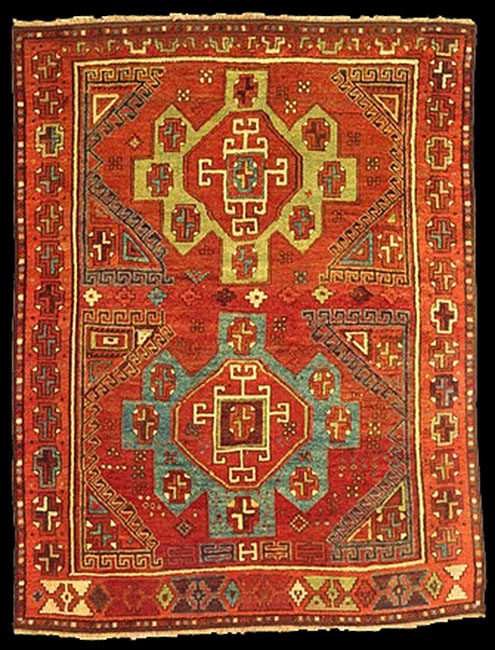Central Anatolia, Aksaray, 1750-1800.
The copper red dye and long
staple lustrous wool is distinctive in a specific group of rug attributed
to Aksaray, as are the cross devices seen in the border and inside the
medallions. Other types were made in the environs with completely
different characteristics. Note the small areas of aubergine dye.
Octagonal reserves are formed by hooked, triangular brackets and within
each are bold Crivelli-type medallions, one rendered in clear pale blue
and the other in yellow-green. Each medallion centers a large,
archaic Turkic kaikalik motif. Along the bottom is a panel of
stepped devices in a kufesque style. A fragment, consisting of the top
half of an almost identical rug, identified as Aksaray, 18th century, was
with Mehmet Cetinkaya in Istanbul in 2007. Another very similar complete
rug, with the same copper red ground and two large blue-green Crivelli
medallions, but with a calyx and serrated leaf meander border, was
exhibited by Franz Sailer in the Perugia Carpet Fair in 1997: ANTICHI ARTI
TESSILI. It is published in the catalogue, p 68, and attributed to
"Aksaray, 17th century."
Dennis Dodds Collection
http://www.maqam-rugs.com/
 |

